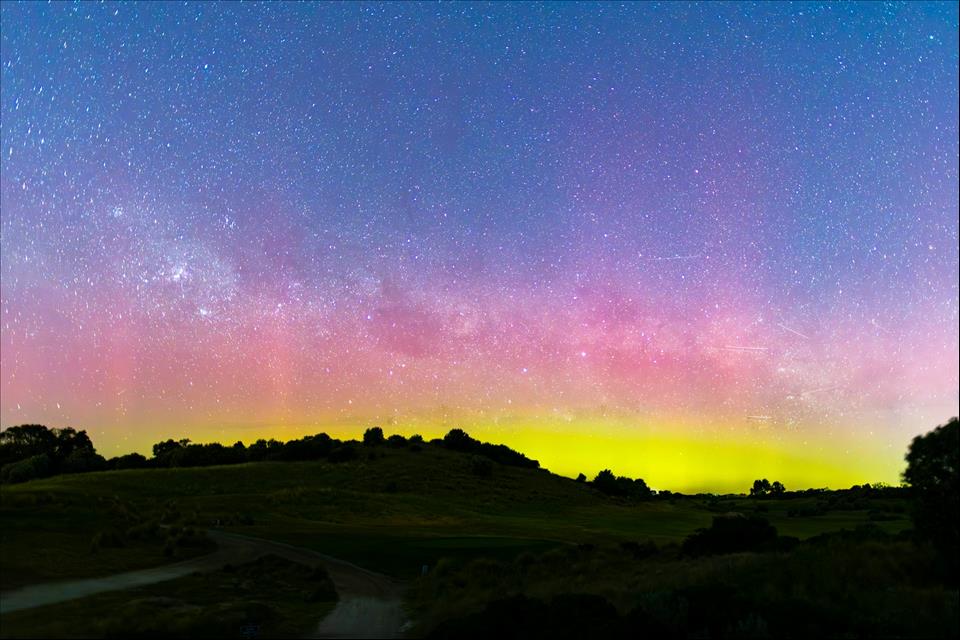
Aurora Likely Tonight As String Of Solar Flares Heads For Earth
At about 0200 UTC (that's 1pm AEDT) on November 12, the US National Oceanic and Atmospheric Administration and Australian Bureau of Meteorology reported large disturbances in Earth's magnetic field due to the solar eruptions: a G4, or severe, geomagnetic storm.
And that means aurora: beautiful, rippling sheets of light in the sky have already been spotted in the northern hemisphere at the time of writing, and they may continue through November 12 and 13.
When the Sun gets restlessWhen the Sun ejects a chunk of plasma – a hot, ionised gas – it's called a coronal mass ejection. It only takes eight minutes for light to reach us from the Sun, so we see these events not long after they happen.
However, the actual plasma can take hours or days to reach Earth. So we have some advance warning.
On November 9 and 10, a highly active sunspot named AR4274 spat out three large coronal mass ejections. They are travelling at different speeds, and two were predicted to arrive at about 0200 UTC on November 12.
A snapshot of the aurora forecast from the NOAA Space Weather Prediction Centre on 11 November 2025. NOAA
These are the coronal mass ejections responsible for the geomagnetic storm that started on November 12. The third of these is expected to arrive roughly 10 hours later, at 1200 UT or 11pm AEDT.
But there's more to come. AR4274 ejected another blob of plasma at 1030 UTC on November 11. This one is expected to arrive at Earth around 2100 UTC on November 12, or 10am AEDT on November 13 (plus or minus 12 hours).
Disturbances on EarthA geomagnetic storm is a disturbance in Earth's magnetic field. This happens when high-energy particles from the Sun, such as from a coronal mass ejection, impact Earth's magnetosphere.
Strong geomagnetic storms have been known to cause satellites to re-enter Earth's atmosphere, impact radio communications or even cause electrical grid blackouts.
A level G4 geomagnetic storm is classed as“severe”. Potential impacts include compromised GPS and satellite navigation systems, degraded radio communications, and disruption of satellites in low Earth orbit.
Another consequence is very active auroras, often visible further from the poles than usual.
Auroras lighting up the skyAuroras happen when high-energy particles in the solar wind or from coronal mass ejections interact with the particles in our atmosphere. This“excites” the particles, such as oxygen and nitrogen, in our atmosphere.
When the particles calm back down again they emit the light that we see as curtains and cascades in the sky.
Severe geomagnetic storms mean we can see auroras where we wouldn't usually. In a G4 storm, even places as far north as Sydney and Perth might be treated to some displays.
The impact of geomagnetic storms is notoriously challenging to predict. So we may be lucky, or we may not. But the nights of November 12 and 13 will be the best chance we've had in a while.
How to see the auroraAuroras are faint and can be difficult to spot at first. Your phone camera can help you out.
To have the best chance, head somewhere dark with as little light pollution as possible when you look to the south.
Using long exposures of a few seconds or longer, your phone can pick up the faint colours more easily. With your eyes, you're likely to see the moving curtains of light but the colour will be less saturated than on your phone.
Green auroras are the most common, with the green and red colours coming from oxygen in the atmosphere. Blue and purple are rarer, and are caused by nitrogen.
As the geomagnetic storm unfolds, skygazers around the world will keep watch, hoping for one of nature's most spectacular shows.

Legal Disclaimer:
MENAFN provides the
information “as is” without warranty of any kind. We do not accept
any responsibility or liability for the accuracy, content, images,
videos, licenses, completeness, legality, or reliability of the information
contained in this article. If you have any complaints or copyright
issues related to this article, kindly contact the provider above.


















Comments
No comment